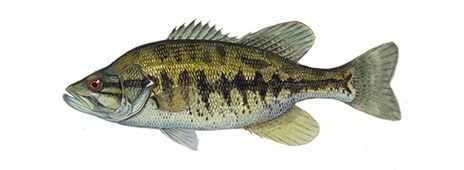Shoal Bass

Species Details
Micropterus Cataractae
Centrarchidae
Perciformes
Onshore, Nearshore, Rivers, Rocky Shoals
4 - 8 lbs.
20" - 24"
Shoal Bass (Micropterus cataractae) Fish Description
The Shoal Bass was often confused with the Redeye Bass or the Suwannee Bass. Genetically, however, it’s closer to a Spotted Bass. Color-wise, Spotted Bass are olive green with dark blotches covering the body. Some of those blotches are also mixed with black tiger stripe-like patterns. The dark blotches cover most of its body but it starts from right behind the gills. They also have black stripes covering their faces like war paint.
Its belly is a cream-white with wavy lines appear right above it. All its fins – dorsal, caudal, anal – are dark olive green to black. However, the pectoral fins can have a cream-colored edge with black spots. Unlike the Redeye Bass, the Shoal Bass has no red on it whereas the former has a red coloration on its fins.
Sometimes, the Shoal Bass can be confused with the Smallmouth Bass due to the vertical stripes on its body. One way to tell them apart is the dark spot that’s at the base of their tail. Shoal Basses have a dark spot whereas Smallmouth Basses don’t. Another bass that it tends to be mistaken for is the Largemouth Bass. The main difference between the two is the size of the mouth. The Largemouth Bass’s mouth reaches all the way to the eye whereas the Shoal Bass doesn’t. Another difference is that the Shoal Bass has scales at the base of the dorsal fin.
Shoal Bass Diet and Size
Shoal Bass love their aquatic insects. But they also have their fair share of larval insects, crayfish, and fish such as Bluegills, Crappies, and Shads. Usually, those kinds of fish are part of a typical Bass’ diet.
A Shoal Bass can grow up to 24 inches. On average, however, a Shoal Bass usually grows up to 12 inches (1 ft). They can weigh up to 8 lbs and 12 oz. There appears to be no reported gender dysmorphism in Shoal Bass.
Interesting Facts about the Shoal Bass
- Shoal Bass meat is flakier but drier than that of Largemouth Bass.
- The Shoal Bass is considered one of the top fighters from the Black Bass family.
- Shoal Bass are known to have few habitats now.
- Usually, they are only known for being native in some rivers.
- Unlike the Largemouth Bass, the Shoal Bass has more stamina than the Largemouth Bass.
- They are a very popular fish to flyfish due to Shoal Bass usually inhabiting rivers.
- The Shoal Bass is part of the Florida Fish and Wildlife conservation commission big catch program.
- They can crossbreed with a Spotted Bass.
- Usually, when anglers catch the Shoal Bass, they are encouraged to release them. If they catch a Spotted Bass, however, they are encouraged to kill them.
Fishing Techniques: How to Fish for a Shoal Bass
When fishing for a Shoal Bass, people often use minnows or worms as possible live bait for the Shoal Bass. However, some people have used crayfish as bait to catch the Shoal Bass. Others have found success in using surface lures to catch a Shoal Bass.
As for your line, the average test line should be between 8-12 lbs. The Shoal Bass isn’t a small fish. And since they’re pretty good fighters, be prepared to have your line strain often. Also, it helps to have a strong line as they are usually found in places that have some sort of flow to them.
When choosing the perfect time to fish, spring and fall are the perfect times when to fish for a Shoal Bass.
Habitat and Distribution
Shoal Bass are known to be native in several rivers. Some of these rivers include the Flint River, the upper portion of Chattahoochee River, the Ocmulgee River, the Apalachicola River, and the Chipola River. They usually look for rocky shoals which are few nowadays.
Another place to find the Shoal Bass is when you find current breaks in the water. Usually, you’ll find them in the middle of a rocky shoal or a place with large boulders. One thing to notice is that they usually lurk places with the flow to them. They don’t appear to be fond of stagnant water.
Once there, you can try your luck at flyfishing for them by using a spinnerbait or some worms to get them biting.







